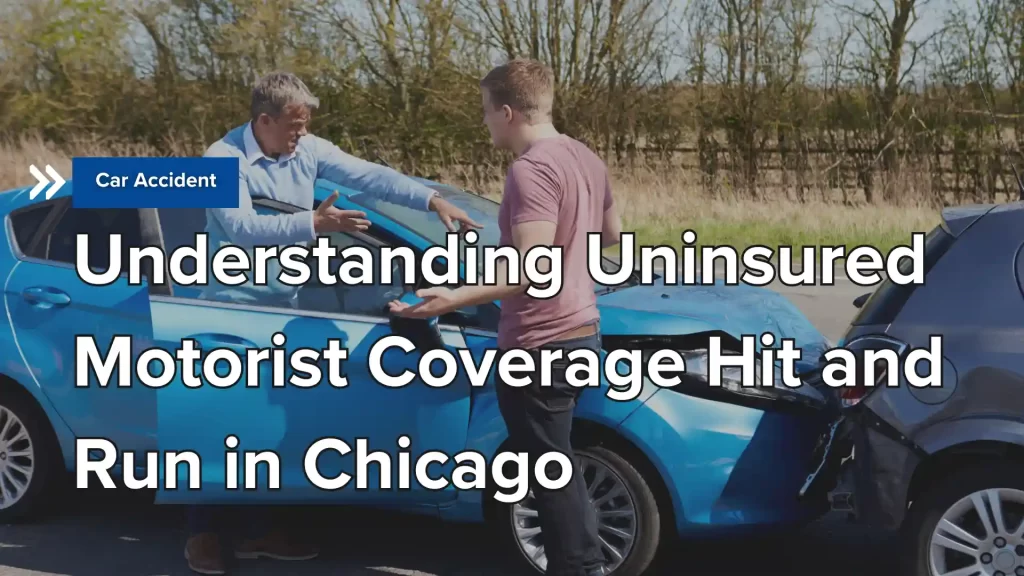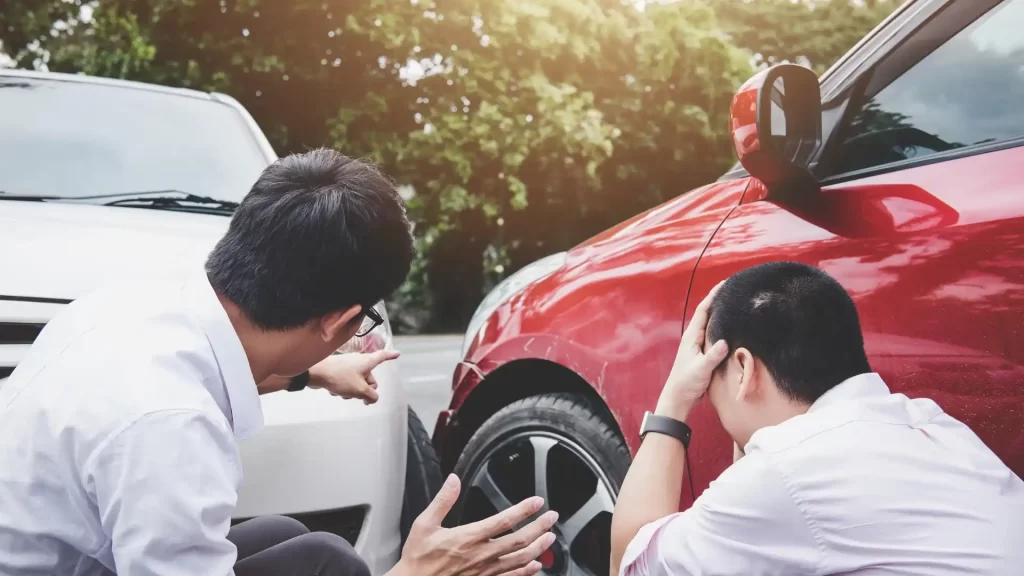
Dealing with the aftermath of a hit-and-run can be daunting, especially when the at-fault driver is long gone. Uninsured motorist coverage hit and run is designed to help cover medical bills, vehicle repairs, and other costs in such scenarios. This is particularly vital in cities like Chicago, where hit-and-run incidents are common. This article will explain what uninsured motorist coverage entails, how it applies to hit-and-run accidents, and the essential steps to take after an incident to ensure you’re well-protected.
What is Uninsured Motorist Coverage?
Uninsured motorist coverage is a critical component of your auto insurance policy, designed to protect you in the event you are involved in an accident with an uninsured or underinsured driver. This type of coverage is mandatory in Illinois and provides a safety net for drivers who might otherwise be left to shoulder the financial burden of an accident alone.
Illinois law mandates specific minimum limits for uninsured motorist coverage: $25,000 per person and $50,000 per accident. This coverage is particularly beneficial in hit-and-run situations where the at-fault driver is not identified. It encompasses a range of potential expenses, such as medical bills, lost wages, physical therapy, and even compensation for pain and suffering. Essentially, it ensures that you are not left in financial distress due to someone else’s negligence.
Beyond the mandatory requirements, uninsured motorist coverage can be tailored to fit your needs. It can extend to cover disability accommodations and long-term therapy, offering peace of mind that you are protected against the uncertainties of the road with car insurance coverage.
This layer of protection is indispensable in a city like Chicago, where traffic incidents are unfortunately common.
How Uninsured Motorist Coverage Applies to Hit and Run Accidents
A hit-and-run accident occurs when the at-fault driver, or the other driver, flees the scene, leaving the victim to deal with the aftermath without any immediate recourse. In such cases, uninsured motorist coverage steps in to fill the gap, providing a lifeline for victims of car accidents. This coverage applies to bodily injuries and property damage, ensuring you are not left out of pocket for expenses that are not your fault.
In Illinois, uninsured motorist bodily injury (UM) coverage is required by law, with minimum limits of $25,000 per person and $50,000 per accident. This coverage protects you against injuries caused by a hit-and-run driver or an at-fault driver who lacks adequate insurance. Additionally, uninsured motorist property damage (UMPD) insurance covers the damage to your vehicle caused by an identified, at-fault, uninsured driver if you do not have collision coverage.
The importance of uninsured motorist coverage in hit-and-run cases cannot be overstated. It offers a safety net, ensuring that victims can seek compensation for their medical expenses, vehicle repairs, and other associated costs without having to locate the at-fault driver. This makes it an invaluable component of any auto insurance policy, particularly in urban areas with high traffic volumes like Chicago.
Steps to Take After a Hit and Run Car Accident
The moments following a hit-and-run accident can be overwhelming. Knowing the immediate steps to take to ensure your safety and protect your rights is essential. Key actions include:
- Ensuring personal safety
- Calling 911
- Gathering information and evidence
- Notifying your insurance company promptly
Ensure Safety and Call 911
Your priority after a hit-and-run accident should always be safety. Here are the steps to follow:
- Stay calm and assess the situation.
- If anyone is injured, do not attempt to move them unless they are in immediate danger, as this could exacerbate their injuries.
- Immediately dial 911 to call the police and medical help at the scene. This ensures that any injuries are promptly addressed and an official report is initiated.
When the police and medical responders arrive, document their names and badge numbers, as this information will be useful later. It is also important to seek medical attention, even if you don’t feel severely injured at the moment, as some injuries might not be immediately apparent due to adrenaline. This step is vital for your health and documenting any injuries for your insurance claim. Having police respond to your hit-and-run accident is crucial as it builds on strong evidence that describe what happened.
Gather Information and Evidence
Information and evidence at the scene of the accident are critical for supporting your insurance claim. If possible, memorize and note key details about the fleeing vehicle, such as its make, model, color, and license plate number. Take clear photos of the accident scene, including traffic signs, skid marks, and the vehicles’ positions.
Collect contact information from any witnesses, as their statements can be vital in hit-and-run investigations. Witnesses can provide an unbiased account of the accident, which can significantly strengthen your case. Additionally, if there are other parties involved, ensure that you gather their names, phone numbers, and insurance information. This comprehensive collection of evidence will be instrumental in supporting your claim.
Notify Your Insurance Company
Promptly notifying your insurance company after a hit-and-run accident is essential. Contact them as soon as possible to initiate the claims process. Provide a detailed account of the accident, including any police reports filed. Being honest and precise in your description helps prevent complications in your claim.
Early engagement with your insurance company allows for timely initiation of the claim process, which is essential if you are facing mounting medical bills.
Filing an Uninsured Motorist Claim for a Hit and Run
Filing an uninsured motorist claim can be a straightforward process if you know what to expect. It involves contacting your insurance company, providing the necessary documentation, and working closely with your insurance provider to ensure you receive fair compensation.
Required Documentation
When filing an uninsured motorist claim, having the right documentation is key. Start with the police report from the hit-and-run accident, as insurance companies often require this to process your claim. Additionally, photographs of the accident scene and vehicle damage are essential. These images provide visual evidence that can support your claim.
Obtaining witness statements can further bolster your case. Witnesses can offer objective accounts of the accident, which can be pivotal in proving your claim. Collecting all these pieces of evidence ensures that you have a strong foundation for your uninsured motorist claim.
Working with Your Insurance Provider
Working with your insurance provider can sometimes be challenging. Insurance companies may dispute the severity of injuries or the cost of repairs, making detailed documentation essential. In such cases, having an attorney can be incredibly beneficial. They can negotiate on your behalf to ensure you receive fair compensation.
Delays in claim processing by the insurance company can be financially burdensome, especially if you are facing mounting medical bills. An attorney can help expedite the process and ensure your rights are protected.
Legal Options for Hit and Run Victims
What are some of the hit-and-run victim rights you should know? In cases of Chicago hit and run, victims have several legal options to seek compensation. These include filing a claim after hit-and-run with insurance companies, pursuing civil lawsuits, or accessing crime victim compensation funds.
Consulting with a Personal Injury Lawyer
Consulting with an experienced car accident lawyer is essential after a hit-and-run accident. A lawyer can provide valuable legal advice for hit-and-run accidents and gauge your legal options when filing a claim. They can review your uninsured motorist policy to ensure you understand your coverage and assist in filing the necessary claims.
Lawyers can also help victims recover compensation from their insurance or the at-fault driver’s insurance if identified. They work on a contingency fee basis, meaning they get paid only if you win your case, which can be reassuring during an already stressful time.
Pursuing a Civil Lawsuit
If they identify the hit-and-run driver, victims can file a personal injury lawsuit in Illinois civil court to recover compensation. This process involves identifying the at-fault driver and gathering evidence to prove fault and damages. Illinois law typically allows two years from the date of the accident to file a lawsuit.
Civil lawsuits can result in compensation for medical expenses, lost wages, and pain and suffering. Pursuing this legal avenue can provide a sense of justice and financial relief for hit-and-run victims.
Common Challenges in Hit and Run Claims

Filing a hit-and-run claim can be challenging. The process often requires written notices and other technical steps, which can be complex for those unfamiliar with insurance procedures. Additionally, there can be a conflict of interest between the claimant and their insurance carrier, as the insurer may aim to minimize payouts.
Litigating insurance coverage issues in court sometimes adds another layer of complexity to the claims process. Many hit-and-run claims also require arbitration under the insurance policy’s terms, which can be a lengthy and intricate procedure. Furthermore, hospital and physician liens from paid and unpaid medical expenses can complicate the settlement process, making it even more challenging for victims to receive the compensation they deserve.
Frequently Asked Questions
Do you need a police report for a hit-and-run in Illinois?
Yes, you need a police report for a hit-and-run in Illinois to support your insurance claim and potential legal action. Illinois law requires drivers involved in an accident to stop at the scene and provide their information.
How does uninsured motorist coverage work in Illinois?
Uninsured motorist coverage in Illinois protects you in case of injury caused by a hit-and-run or uninsured driver, as required by state law. The minimum coverage limits are $25,000 per person and $50,000 per accident.
What is uninsured motorist coverage?
Uninsured motorist coverage is a type of auto insurance that protects you in case of an accident with an uninsured or underinsured driver, covering medical expenses and lost wages.
How does uninsured motorist coverage apply to hit-and-run accidents?
Uninsured motorist coverage applies to hit-and-run accidents by compensating for injuries and property damage when the at-fault driver is unidentified or uninsured. It’s important to have this coverage for added protection.
What steps should I take immediately after a hit-and-run accident?
After a hit-and-run accident, ensure safety, call 911, gather evidence, and promptly notify your insurance company.
Contact a Chicago Car Accident Lawyer
At JJ Legal, dealing with the aftermath of a hit-and-run accident can be overwhelming, but understanding uninsured motorist coverage and the steps to take can significantly ease the process. Our team will ensure your safety and gather evidence to file a hit-and-run insurance claim and seek legal advice. Our law firm can help you protect your rights and secure compensation.
You don’t have to navigate this complex journey alone: our uninsured driver accident lawyer can help you. Consulting with our Chicago car accident attorneys can provide the support and expertise needed to ensure you receive the maximum compensation possible. Call us at 312-200-2000 for a free case review. Stay informed, stay safe, and know that there are resources available to help you through this challenging time.



